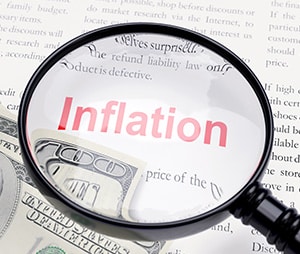NACM National
Jamilex Gotay, Editorial Associate
As inflation continues to wreak havoc on the global economy, the labor market is showing signs of cooling. According to the latest Job Openings and Labor Turnover Survey (JOLTS), the count of job openings plummeted by 1.1 million vacancies in August, the sharpest drop since 2020. The unemployment rate fell 3.5% in September, hitting a 50-year low, according to Wells Fargo.
“The JOLTS plunge will come as welcome news to the FOMC,” per Wells Fargo. “Fed Chair Powell has frequently cited the high number of openings relative to the number of unemployed workers as indicative of a labor market that is too tight. August’s plunge in openings is a sign that tighter monetary policy is starting to slow hiring, and possibly the inflation pressures stemming from rapid wage growth. The market reaction to the news was likely owed to the belief that a pivot towards less-hawkish monetary policy could be coming sooner than expected.”
Another encouraging sign for the fight against inflation is that wage growth did not appear to accelerate in September. Average hourly earnings increased 0.3% in September, in line with expectations. Annually, wages rose 5%, a bit slower that August’s 5.2% rise.
“The cool down will come as a welcome development, but wage growth remains well above rates that are consistent with the Fed’s 2% inflation target,” per Wells Fargo. “All told, none of this week’s incoming labor market data change our view that the Fed will continue to aggressively tighten monetary policy to tame inflation, and we continue to look for a 75-bps hike at the November FOMC meeting.”
But if central banks are to reel inflation back to 2%, roughly 3 million jobs will need to disappear, according to Seeking Alpha. The Consumer Price Index (CPI) hit 8.2% year over year in September, down slightly from 8.3% in August. Prices rose 0.4% month over month, up from 0.1% from July to August. And wholesale inflation rose 8.5% annually in September compared to 8.7% the month prior, according to the U.S. Labor Department. Wholesale inflation rose 0.4% in September following two consecutive months of decline. Even with the slight dip, inflation is still too hot for the Federal Reserve to pump its brakes on rate hikes.
However, some economists think inflation has less to do with the hot job market and more to do with supply shocks—something the Fed cannot easily fix by raising interest rates. “If the Fed does something to hammer inflation, and I mean people are noticing unemployment coming from Fed actions, and then inflation doesn’t come down or as much as the public was led to expect, then the expectations piece gets more explosive,” Peter Diamond, winner of the 2010 Nobel Prize in economics, told MarketWatch.
Recent Posts
- How Can the CMI be Used for Performance Insights? January 6, 2025
- Economic Reconnaissance | Economic Growth During the Next Presidency December 3, 2024
- How Credit Managers Can Step into Executive Leadership November 13, 2024
- New California law extends consumer debt protections to small businesses October 15, 2024
- Economic Reconnaissance | Putting the FAB in Fabrinomics!! October 1, 2024
- Economic Reconnaissance | Sifting Through the Noise During “Silly Season” August 1, 2024









